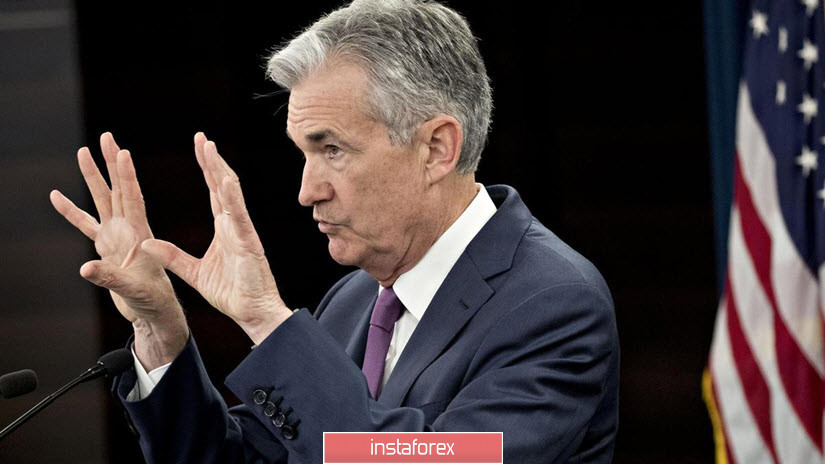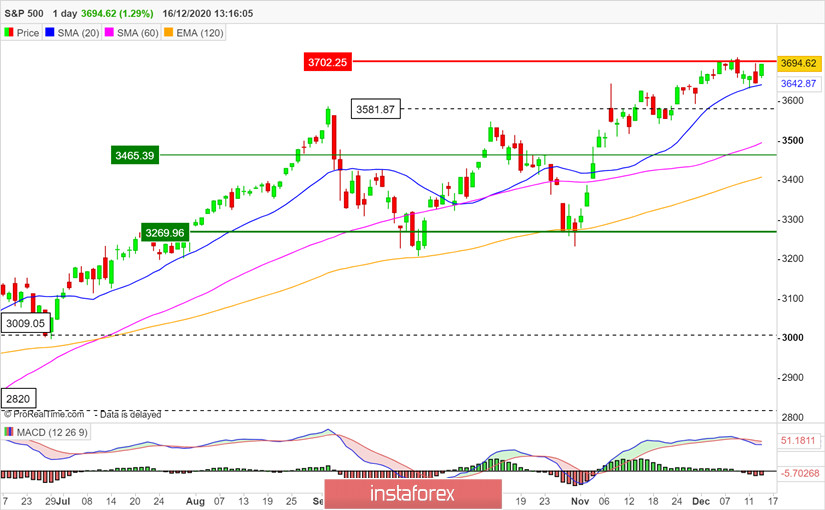The final event of this year will be the meeting of the Open Market Committee of the US Federal Reserve, which will be held on December 15 and 16, 2020, and will decide on the further monetary policy of the main world Central Bank. On the one hand, this event can turn the markets upside down. On the other hand, its significance for the foreign exchange and commodity markets is often misinterpreted, leading to disastrous results. In this article, we will try to figure out what a trader should do, what assets to monitor, and what consequences this can lead to.
In my opinion, the main mistake traders make is fantasizing about what will happen. The danger of interpreting what should happen lies in the simple desire to be the first in the future trend in order to get the maximum possible amount of profit. At the same time, few of these rushes will wait for the end of the trend in the future, and most likely will jump out of it at the very first stop, considering themselves to be a very perspicacious, intelligent, and successful investor. The fact that then the trend will move in a given direction twice as long as the original movement, they usually do not care. Having received a minimum of profit, the hurry-ups will enthusiastically begin to trade against the trend, trying to once again be in the forefront, while suffering drawdowns that significantly exceed the initial profits.

In itself, the desire to earn as much as possible is quite natural. This is the reason we come to the market, but the methods used to realize this desire, for the most part, are absolutely useless. Absolutely all traders and investors, including myself, pass through the desire to predict, but the main thing is not to predict but to react, and this is the essence of making money in the financial markets. A simple example tells us that if there is no trend, then we will not earn anything, and if the trend is formed and happens, then we will have the opportunity to enter it. Thus, it is absolutely pointless to enter the market before the trend starts. In other words, predicting the direction of movement is a useless and very expensive task.
Similarly, it is absolutely pointless to predict the decision of the US Federal Reserve Open Market Committee and the reaction to it, but working out the algorithm of actions after Jerome Powell speaks at the press conference and the decision on monetary policy is announced is quite possible and necessary, but for this, it is necessary to know where to look and what to do?
First of all, traders should clearly know that the decision of the central bank is not for currencies or commodities, the decisions of the Central Bank, have an impact on the stock market, on stocks and bond yields, and only then, through intermarket links, on all other assets. From here it becomes clear that in order to determine how the euro, dollar, gold, or oil will behave after the Fed meeting, one must understand what will happen to the stock indices.
There are many indices, but there are two key ones - the DJIA index, which is commonly referred to as the Dow Jones Index, and the S&P 500 broad market index. There is also a high-tech NasDaq100, but it is much less connected with traditional assets, so the dynamics of this index, in this case, can be ignored.

Figure 1: S&P 500 Index Chart, Daily Time Frame
In my opinion, it is best to use the S&P 500 index chart for analysis, as it most reflects the current situation in the US market. As follows from Chart 1, the index formed a narrow range bounded from below by the level of the monthly moving average line - 20 MA, and from above by the resistance level - 3700. With a high degree of probability, the decision of the US Federal Reserve will lead to the fact that this range will be broken either up or down. From which we can predict the further development of events that will happen with a high degree of probability.
If the breakout occurs upward and the S&P 500 index closes the current week above the level of 3700, then the US stock market may soon add up to 5% to its current value. This is an undoubted positive that will determine the dynamics of the markets for all New Year holidays and most likely until the end of January 2021, unless of course Donald Trump does something, for example, cancels the results of the US presidential election.
If the S&P 500 grows, the most likely scenario will be an increase in the oil price with prospects up to $55 for Brent and $50 for WTI.
However, the situation with the price of gold, in this case, will be ambiguous. The rise in equity markets is likely to push the price of gold down. At the same time, the US dollar is likely to decline, which will lead to an increase in the European currency rate to 1.2250.
If the breakdown occurs downward and the S&P 500 index closes the current week below the level of 3642, i.e. below the level of the moving average line, then the US stock market will begin to decline and most likely fall to the level of 3500, and in the next three months will reach the support value of 3269. As such, there will be an undoubted negative for all financial markets.
In this case, we can expect a decrease in oil prices to $40 for Brent and $35 for WTI. A decrease in the S&P 500 will be negative for the gold market, which is likely to drop to the level of $1700. The US dollar will strengthen against a basket of foreign currencies, while the euro will decline to 1.18 and possibly even lower.
Any of the provided scenarios will offer traders excellent prospects for making a profit, and all we need to do is find good entry points for the assets listed above. The worst scenario for us will be one in which the Fed's decision will not lead to significant changes in the stock markets, and the S&P 500 index will remain in the range after the new year. This variant of high uncertainty will leave us without action algorithms and will force us to stay out of the market for some time until a breakout in one direction or another finally occurs. Watch out for the S&P 500 anyway, it will tell you the most likely scenario. Be careful and follow the money management rules.
 English
English 
 Русский
Русский Bahasa Indonesia
Bahasa Indonesia Bahasa Malay
Bahasa Malay ไทย
ไทย Español
Español Deutsch
Deutsch Български
Български Français
Français Tiếng Việt
Tiếng Việt 中文
中文 বাংলা
বাংলা हिन्दी
हिन्दी Čeština
Čeština Українська
Українська Română
Română

